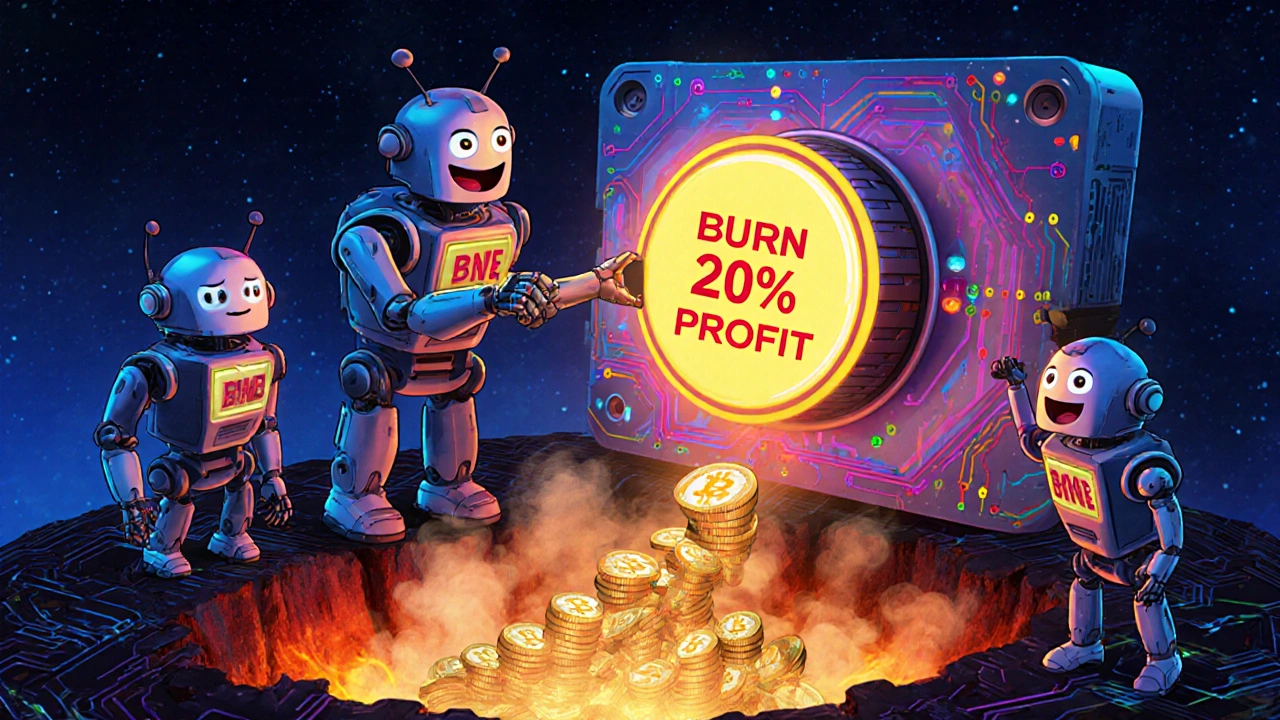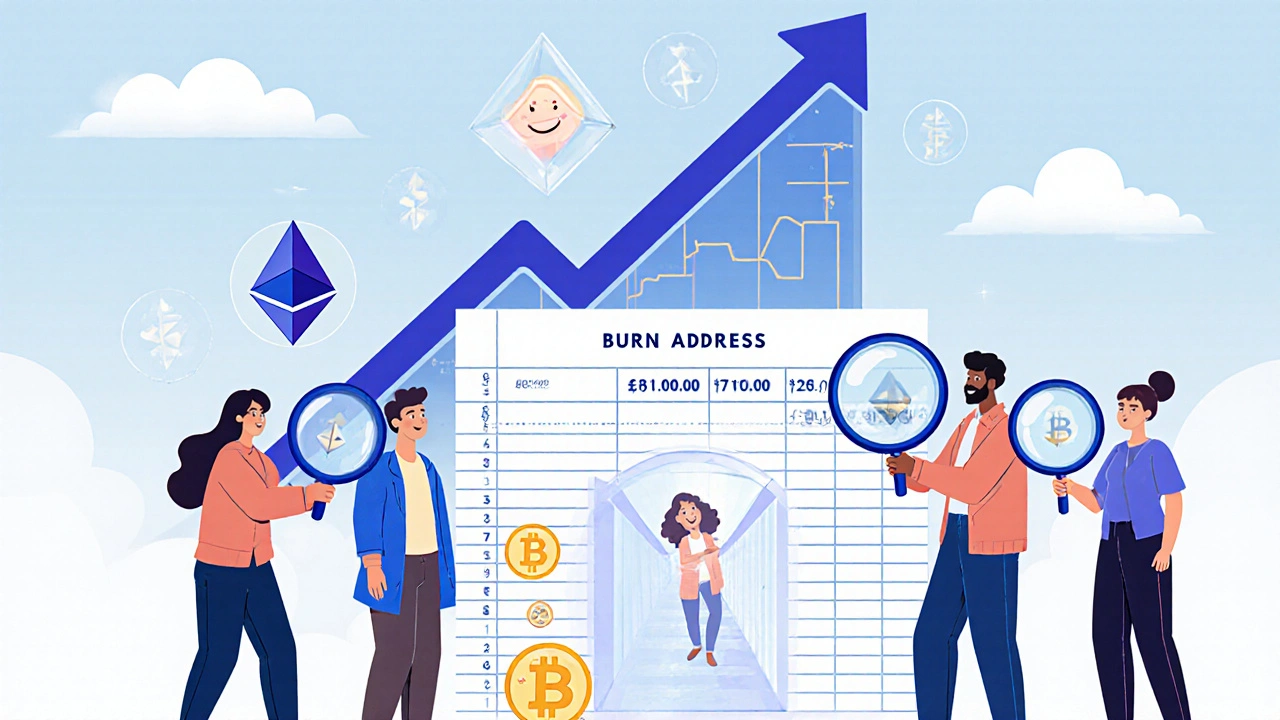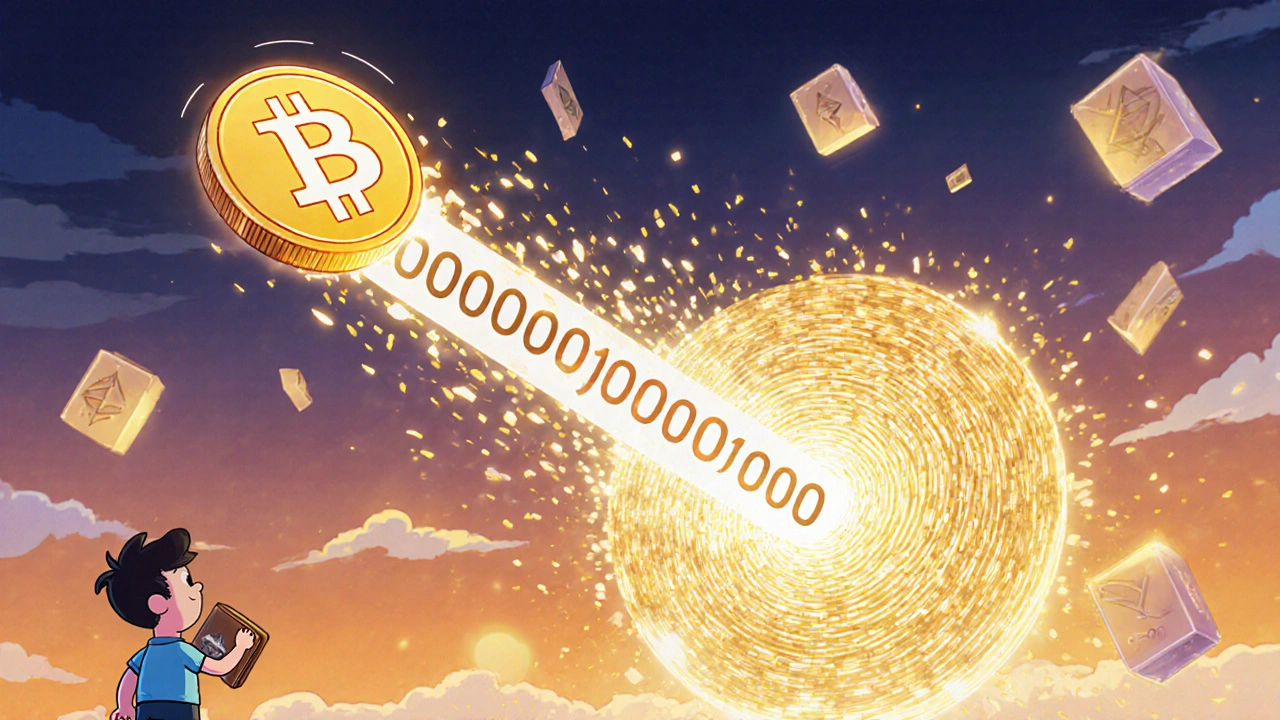Every time a cryptocurrency gets burned, it disappears forever. Not locked away. Not stored in some wallet. Gone. Like burning a dollar bill - except in crypto, this actually changes the total supply and can make the remaining coins more valuable. It sounds strange, but it’s one of the most powerful tools in crypto economics. And it’s not magic. It’s code.
What exactly is crypto burning?
Crypto burning means sending tokens to a wallet that no one can access. This isn’t just any wallet - it’s a special address called a burn address. These addresses have no private key. Nobody owns them. Nobody can ever spend from them. Once tokens go there, they’re gone from circulation forever.
Think of it like shredding cash and throwing the pieces into a volcano. You can’t put it back together. You can’t recover it. And now, there’s less of it in the world.
Most burn addresses start with long strings like 0x0000000000000000000000000000000000000000. On Ethereum, this address is known as the null address. On Binance Chain, it’s a specific address used only for burning. The protocol doesn’t care where the tokens go - as long as they’re sent to a place that can’t be used, it counts as burned.
Why do projects burn tokens?
There are three main reasons: to reduce supply, to control inflation, and to build trust.
First, reducing supply. If you own a coin and the total number of coins goes down, each remaining coin becomes rarer. That can drive up the price - not because of hype, but because of basic economics. Less supply, same demand = higher value. This is why Bitcoin’s fixed supply of 21 million is so appealing. Burning works the same way, but it’s done on purpose by the project team.
Second, controlling inflation. Many tokens are created over time - like rewards for staking or mining. Without burning, the total supply keeps growing. That’s inflation. Burning offsets that. For example, Binance burns 20% of its quarterly profits in BNB tokens. Since 2017, they’ve burned over 40 million BNB. That’s not just marketing - it’s a real reduction in supply.
Third, building trust. When a team burns tokens, it shows they’re not just printing more coins to make themselves richer. It signals commitment. Investors notice. Communities notice. It turns a vague promise into a verifiable action.
How is burning done?
There are two main ways: manual burns and automated burns.
Manual burns happen when a project team decides to send a chunk of tokens to a burn address. They do this using a blockchain transaction. It’s public. Anyone can check it on a block explorer. You can see exactly how many tokens were burned, when, and from which wallet. For example, in 2023, the Solana Foundation burned 1.5 million SOL tokens to reduce circulating supply after a major network upgrade.
Automated burns happen through smart contracts. These are self-executing rules on the blockchain. For example, Ethereum’s EIP-1559 update introduced automatic burning of transaction fees. Every time you send ETH, a portion of the fee gets burned. In 2024, over 5 million ETH were burned this way - equivalent to 3% of total supply. That’s not a one-time event. It’s built into the system. Every transaction makes ETH slightly scarcer.
Some tokens even burn based on usage. Like Axie Infinity’s AXS token - a percentage of in-game revenue gets burned every week. The more people play, the more tokens disappear.

Does burning actually increase price?
Not always. But it often helps.
Price depends on demand. Burning reduces supply. If demand stays the same, price tends to rise. But if no one cares about the coin anymore, burning won’t save it. You can’t burn your way out of a dying project.
Look at Shiba Inu. It burned over 400 trillion SHIB tokens in 2021. The price didn’t jump overnight. But over time, as demand grew and supply shrank, the price did climb. The burn helped - but only because people started using it. Burning is a tool, not a miracle.
Compare that to Dogecoin, which has no burning mechanism. Its supply keeps growing. No hard cap. No reduction. That’s why many investors see it as inflationary - and why its price has stayed flat for years despite hype.
Real examples of successful burns
BNB (Binance Coin): Since 2017, Binance has burned BNB every quarter. They use 20% of their profits to buy back and burn tokens. As of 2025, over 40 million BNB have been destroyed. The total supply dropped from 200 million to just under 150 million. That burn is a core reason why BNB remains one of the top 5 cryptocurrencies by market cap.
Ethereum: After the Merge and EIP-1559, Ethereum went from being inflationary to deflationary. In 2024, over 5 million ETH were burned. That’s more than the entire supply of many altcoins. Ethereum’s supply is now shrinking month after month. That’s historic.
Polygon: In 2023, Polygon burned 1.5 billion MATIC tokens to reduce inflation from staking rewards. The move was met with strong community support. MATIC’s price rose 18% in the following week.
These aren’t random acts. They’re strategic. And they’re tracked publicly.

What to watch out for
Not all burns are real. Some projects fake it.
Watch for these red flags:
- Claims of burning without public transaction links - if you can’t check it on Etherscan or BscScan, it’s probably not real.
- Burns that happen right before a big price pump - often used to manipulate sentiment.
- Burns of tokens that were never in circulation - like burning tokens from the team’s reserved pool without reducing supply.
Real burns come from circulating supply. If a project burns tokens that were never sold to the public, it doesn’t change scarcity. It’s just moving coins from one pocket to a dead wallet.
Always check the burn address. Use a block explorer. Look at the transaction history. See if the tokens were taken from wallets that were actually traded. That’s the only way to know if the burn matters.
Can you burn your own crypto?
Technically, yes. But you shouldn’t.
If you send your ETH or BNB to a burn address, you lose it forever. No recovery. No refund. No support team. You’re not helping the project. You’re just throwing money away.
Some people do it as a protest - like burning tokens from a project they think is a scam. But that doesn’t change anything. Only the project team can burn tokens from the circulating supply in a way that affects the market.
Don’t burn your own coins. Wait for the team to do it - and only if they’re transparent about it.
What’s next for crypto burning?
Burning is becoming standard. New chains are building it in from day one. Layer 2 networks like Arbitrum and Optimism now burn a portion of their gas fees. Even stablecoins like USDT are starting to burn tokens to offset minting.
The trend is clear: scarcity matters. And burning is the cleanest, most transparent way to create it. No central authority can undo it. No one can print more. Once burned, it’s gone.
In the next five years, we’ll likely see more tokens adopt automated burning. Some might even tie it to real-world metrics - like burning tokens when carbon emissions drop, or when user growth hits targets. The possibilities are growing.
For now, burning is a simple, powerful idea: take something away, and make what’s left more valuable. It’s not about hype. It’s about math. And in crypto, math always wins.
Is crypto burning the same as destroying coins?
Yes, crypto burning is the same as destroying coins - but only in a technical sense. It’s not physical destruction. It’s a blockchain transaction that sends tokens to an address that can never be accessed again. The tokens still exist on the ledger, but they’re permanently unusable. That’s why it’s called "burning" - it’s the digital equivalent of throwing money into a fire.
Can a burned token be recovered?
No. Once tokens are sent to a burn address, they cannot be recovered. Burn addresses have no private key. No one - not even the project team - can access them. This is by design. If recovery were possible, burning wouldn’t reduce supply, and the whole system would lose trust.
Does burning make a cryptocurrency more valuable?
It can, but only if demand stays steady or grows. Burning reduces supply, which increases scarcity. If people still want to buy the coin, prices tend to rise. But if no one cares about the project, burning won’t help. For example, Ethereum’s price rose after burning started because demand for ETH was strong. A coin with no users won’t get a price bump from burning alone.
How do I check if a token has been burned?
Use a blockchain explorer like Etherscan for Ethereum, BscScan for Binance Chain, or Solana Explorer for Solana. Search for the burn address (usually a long string of zeros). Look for transactions sending tokens to that address. The amount, date, and source wallet will be visible. Real burns are public and verifiable.
Are all token burns legitimate?
No. Some projects burn tokens from their own reserve wallets - tokens that were never sold to the public. That doesn’t reduce circulating supply, so it doesn’t create scarcity. Real burns come from tokens already in the market. Always check where the burned tokens came from. If it’s from a team wallet with no history of sales, the burn is likely just for show.

